AI Product Management
- Description
- Curriculum
- FAQ
- Announcement

We’re excited to guide you through this journey of growth and discovery. Join us as we embark on this educational adventure that promises to transform not just your career but also the products you’ll bring to life.
The future of product management is bright, and with our new course, it’s within your reach. Enroll now and take the first step towards becoming a catalyst for product excellence.
Here’s a structured curriculum designed to equip learners with the knowledge and skills necessary to excel in product management roles. This curriculum is aimed at beginners to intermediate learners who are looking to build a solid foundation in product management principles and practices.
Module 1: Introduction to Product Management
Lesson 1: The Role of a AI Product Manager – Understanding the responsibilities, skills, and mindset of a successful product manager.
Lesson 2: Overview of the Product Lifecycle Introduction to the stages of the product lifecycle: conception, development, launch, growth, maturity, and decline.
Module 2: Understanding Users and Markets
Lesson 3: Market Research Techniques – Learning to conduct qualitative and quantitative market research.
Lesson 4: User Personas and Journey Mapping – Creating detailed user personas and mapping customer journeys to understand user needs and behaviors.
Module 3: Ideation and Validation
Lesson 5: Ideation Techniques – Exploring methods for generating and prioritizing product ideas.
Lesson 6: Product Validation and MVP – Understanding Minimum Viable Product (MVP) and techniques for validating product concepts.
Module 4: Product Strategy and Roadmapping
Lesson 7: Formulating Product Strategy – Developing a product strategy that aligns with business goals and user needs.
Lesson 8: Roadmapping and Prioritization – Creating product roadmaps and learning prioritization frameworks like RICE and MoSCoW.
Module 5: Design and Development
Lesson 9: Basics of UX/UI Design for Product Managers – An overview of design principles, user experience (UX), and user interface (UI) design.
Lesson 10: Agile and Scrum Fundamentals – Introduction to Agile methodologies, focusing on Scrum practices and the role of a product manager in Agile environments.
Module 6: Launch and Growth
Lesson 11: Go-to-Market Strategies – Planning and executing effective go-to-market strategies for product launches.
Lesson 12: Growth Hacking Techniques – Leveraging growth hacking methods to drive user acquisition and retention.
Module 7: Analytics and Performance Measurement
Lesson 13: Key Performance Indicators (KPIs)Identifying and tracking the right KPIs for product success.
Lesson 14: Using Analytics Tools – An overview of analytics tools and how to use data to make informed product decisions.
Module 8: Leadership and Communication
Lesson 15: Leadership in Product Management – Developing leadership skills and effectively managing cross-functional teams.
Lesson 16: Effective Communication and Stakeholder Management – Mastering communication skills for engaging with teams, stakeholders, and users.
Lesson 17: Leadership in Product Management
Lesson 18: Advanced Topics in Product Management
Lesson 19: Product Ethics and Responsible Innovation
Lesson 20: The Future of Product Management
Course Wrap-up
-Final Project: Applying learnings to develop a comprehensive product plan, including market analysis, product strategy, roadmap, and launch plan.
-Feedback and Reflection: Gathering course feedback and reflecting on key learnings and areas for future development.
Check out the AI Product Manager course at optionbigbull.com
Join the conversation and let us know how you envision the future of product management. Follow our page for more updates, insights, and industry news. #ProductManagement #Innovation #TechEducation #CareerGrowth #AI
-
1Lesson 1: The Role of a AI Product Manager
Overview
Welcome to the first lesson of our Product Management course. In this lesson, we will explore the role of a Product Manager (PM), the core responsibilities, essential skills, and the mindset required to succeed in this dynamic field. Product Management sits at the intersection of business, technology, and user experience, making it a unique and exciting career path.
-
2Lesson 2: Overview of the Product Lifecycle
Overview
In this lesson, we're diving into the core concept of the product lifecycle, a fundamental framework that guides the management of a product from its inception to its decline. Understanding the stages of the product lifecycle is crucial for Product Managers as it shapes the strategies and tactics employed at each phase to maximize the product's success and longevity in the market
-
3Lesson 3: Market Research Techniques
Overview
Welcome to Lesson 3, where we dive into the essential tools and methodologies of market research. For Product Managers, understanding the market is foundational to making informed decisions, identifying opportunities for innovation, and ensuring that products meet the needs of their target users. This lesson will cover various qualitative and quantitative research techniques, their applications, and how to draw actionable insights from the data collected
-
4Lesson 4: User Personas and Journey Mapping
In this lesson, we'll delve into two crucial tools that Product Managers use to understand their users deeply: User Personas and Journey Mapping. These techniques help in visualizing who the product's users are and how they interact with the product, providing insights that drive user-centric product development and design.
-
5Lesson 5: Ideation Techniques
Welcome to Lesson 5, where we'll dive into ideation techniques, an essential phase in the product development process. Ideation is the creative process of generating, developing, and communicating new ideas. It's where innovation begins, allowing Product Managers and their teams to brainstorm solutions that meet user needs and address market gaps. This lesson introduces several proven techniques to foster creativity and facilitate effective ideation sessions.
-
6Lesson 6: Product Validation and MVP
In Lesson 6, we focus on the critical phase of product development: validation. Product validation is the process of testing and validating your product ideas with real users to ensure that the product will meet market needs before investing significant resources into full-scale development. A key tool in this process is the Minimum Viable Product (MVP), which helps in gathering maximum validated learning about customers with the least effort. This lesson will guide you through the principles of product validation and how to design and use an MVP effectively.
-
7Lesson 7: Formulating Product Strategy
In Lesson 7, we turn our focus to the art and science of formulating a product strategy. A strong product strategy acts as a roadmap guiding the development and success of a product by aligning it with the business objectives, market needs, and user expectations. It determines the direction of product development and sets the foundation for making decisions about priorities, implementations, and adjustments along the product’s lifecycle. This lesson will introduce the key components of a product strategy and guide you through the process of creating one.
-
8Lesson 8: Roadmapping and Prioritization
Lesson 8 focuses on the development and management of product roadmaps and the prioritization of features and initiatives. A product roadmap is a strategic document that outlines the vision, direction, priorities, and progress of a product over time. It communicates the why and what behind the product and aligns stakeholders around a common goal. Prioritization is the process of deciding which features, enhancements, or initiatives to focus on, based on their expected impact on the product's success. This lesson introduces the frameworks and best practices for creating effective roadmaps and prioritizing product work
-
9Lesson 9: Basics of UX/UI Design for Product Managers
In Lesson 9, we delve into the fundamentals of User Experience (UX) and User Interface (UI) design from the perspective of a Product Manager. UX/UI design is pivotal in creating products that are not only functional but also provide delightful experiences to users. This lesson aims to equip Product Managers with the knowledge to effectively collaborate with design teams, advocate for user needs, and make informed decisions that enhance the product's usability and appeal.
-
10Lesson 10: Agile and Scrum Fundamentals
Welcome to Lesson 10, where we delve into the fundamentals of Agile and Scrum, two key methodologies that have revolutionized the way digital products are developed. Agile is a set of principles for software development under which requirements and solutions evolve through the collaborative effort of self-organizing cross-functional teams. Scrum is an Agile framework that helps teams work together to develop, deliver, and sustain complex products through iterative progress. This lesson aims to provide product managers with an understanding of Agile and Scrum principles, enabling them to effectively participate in or lead Agile teams.
-
11Lesson 11: Go-to-Market Strategies
Welcome to Lesson 11, where we delve into the crucial phase of launching a product - the Go-to-Market (GTM) strategy. This strategy is a blueprint that outlines how a company will introduce its product to the market, engage with its target audience, and achieve competitive advantage. It covers marketing, sales, distribution, pricing, and customer service aspects, ensuring a unified approach to entering the market. This lesson aims to provide product managers with insights into designing and implementing a successful GTM strategy for their products or features.
-
12Lesson 12: Growth Hacking Techniques
Welcome to Lesson 12, where we explore the dynamic and innovative world of growth hacking. Growth hacking is a marketing technique developed by technology startups that uses creativity, analytical thinking, and social metrics to sell products and gain exposure. It focuses on low-cost and innovative alternatives to traditional marketing, leveraging data-driven strategies and rapid experimentation to achieve growth. This lesson aims to equip product managers with an understanding of growth hacking principles and how to apply them to foster rapid growth of their products
-
13Lesson 13: Key Performance Indicators (KPIs)
Welcome to Lesson 13, focusing on Key Performance Indicators (KPIs), vital tools for measuring the success and health of your product. KPIs are quantifiable measures used to evaluate the effectiveness of a product in achieving key business objectives. This lesson aims to equip product managers with the knowledge to select, implement, and analyze the right KPIs to guide decision-making and product strategy.
-
14Lesson 14: Using Analytics Tools
Welcome to Lesson 14, where we dive into the use of analytics tools in product management. Analytics tools are essential for gathering data, monitoring performance, and deriving insights that inform decision-making. This lesson aims to equip product managers with the knowledge to select and utilize the right analytics tools to track product performance, understand user behavior, and drive product improvements.
-
15Lesson 15: Enhancing User Engagement and Retention
Welcome to Lesson 15, focusing on strategies to enhance user engagement and retention. In today’s competitive digital product landscape, attracting users is only part of the challenge; keeping them engaged and retaining them over time is crucial for long-term success. This lesson explores practical tactics and frameworks to increase user engagement, improve retention rates, and build a loyal user base
-
16Lesson 16: Effective Communication and Stakeholder Management
Welcome to Lesson 16, focusing on effective communication and stakeholder management in product management. This lesson is designed to enhance your skills in communicating product vision, progress, and challenges to various stakeholders, including team members, executives, and customers. Effective communication and stakeholder management are crucial for aligning expectations, facilitating collaboration, and ensuring the successful delivery of your product.
-
17Lesson 17: Leadership in Product Management
Welcome to Lesson 17, focusing on leadership within the realm of product management. Leadership in this context goes beyond traditional notions of authority, emphasizing instead the ability to inspire, guide, and unite a diverse team towards a common goal: the successful development and launch of a product. This lesson explores the qualities, skills, and practices that make a product manager an effective leader, regardless of their position or title.
-
18Lesson 18: Advanced Topics in Product Management
Overview
Welcome to Lesson 18, where we delve into advanced topics in product management. This lesson aims to broaden your understanding of the complexities and nuances in the field, exploring cutting-edge strategies, technologies, and methodologies that are shaping the future of product development and management. As product management evolves, staying ahead of trends and emerging practices is crucial for driving innovation and achieving sustained product success.
-
19Lesson 19: Product Ethics and Responsible Innovation
Overview
Welcome to Lesson 19, focusing on Product Ethics and Responsible Innovation. As technology increasingly infiltrates every aspect of our lives, the ethical implications of product development have come to the forefront. This lesson explores the principles of ethical product management, the importance of considering the societal impact of products, and how to navigate ethical dilemmas in innovation. Responsible innovation ensures that products not only achieve business success but also contribute positively to society and safeguard against harm.
-
20Lesson 20: The Future of Product Management
Overview
Welcome to Lesson 20, the final lesson in our series, where we explore the future of product management. This lesson aims to prepare you for the evolving landscape of product management, highlighting emerging trends, technologies, and methodologies that are shaping the discipline. As the pace of innovation accelerates, product managers must anticipate changes, adapt their strategies, and continuously learn to stay ahead. This lesson provides insights into what lies ahead and how to position yourself and your products for success in the future.
New AI Prouct Management courses cominh soon ..!!







